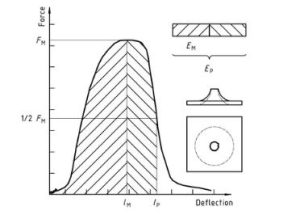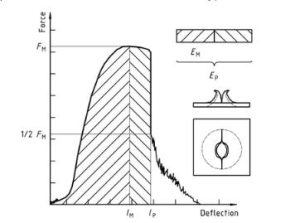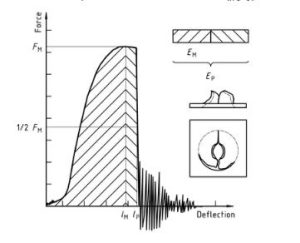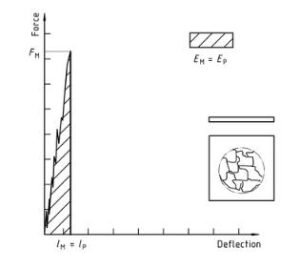ISO 6603-2-2000 “Plastics hard plastics puncture impact behavior determination – Bahagi 2: Instrumento epekto test”
paunang salita
ISO (International Organization para sa Standardisasyon) ay isang pandaigdigang alyansa ng mga pambansang pamantayan katawan (Mga katawan ng miyembro ng ISO). Ang pagbuo ng mga internasyonal na pamantayan ay karaniwang isinasagawa sa pamamagitan ng ISO teknikal na komite. Ang bawat institusyon ng miyembro na interesado sa isang paksa kung saan itinatag ang isang teknikal na komite ay may karapatang kumatawan sa komiteng iyon. Ang mga internasyonal na organisasyon ng pamahalaan at di pamahalaan na nakikipag ugnayan sa ISO ay kasangkot din sa gawaing ito. ISO ay gumagana nang malapit sa International Electrotechnical Commission (IEC) sa lahat ng bagay ng electrotechnical standardization.
International pamantayan ay drafted alinsunod sa mga patakaran na ibinigay sa Bahagi 3 ng Direktiba ng ISO / IEC.
Ang draft international standards na pinagtibay ng Technical Committee ay ipapakalat sa mga miyembro ng katawan para sa pagboto. Ang paglalathala bilang isang internasyonal na pamantayan ay nangangailangan ng pag apruba ng hindi bababa sa 75% ng mga katawan ng miyembro.
Please note that some elements of this section of ISO 6603 May be the subject of patent rights. Ang ISO ay hindi mananagot para sa pagtukoy ng anuman o lahat ng naturang patente.
International standard ISO 6603-2 was developed by Technical Committee ISO/TC 61, Mga plastik, Subcommittee SC 2, Mechanical Properties.
Ang ikalawang edisyon ay kinansela at pinalitan ang unang edisyon (ISO 6603-2:1989), which had been technically revised.
ISO 6603 consists of the following parts under the general heading Plastics – Pagpapasiya ng puncture epekto pag uugali ng matigas na plastik:
— Bahagi 1: Pagsusuri ng di instrumental na epekto
— Bahagi 2: Instrumental impact testing
The appendices A to E of this part of ISO 6603 are for reference only.
ISO 6603-2-2000 “Plastics hard plastics puncture impact behavior determination – Bahagi 2: Instrumento epekto test”
1 saklaw
Ang bahaging ito ng ISO 6603 specifies a test method for determining puncture impact properties of rigid plastics in the form of flat specimens using instruments that measure force and deflection. Applies if a force-deflection or force-time plot recorded at a nominal constant firing pin speed is necessary to characterize impact behavior in detail.
If ISO 6603-1 is sufficient to characterize the impact behavior of plastics by impact failure energy thresholds based on many samples, ISO 6603-1 May be used.
Ang bahaging ito ng ISO 6603 is not intended to explain the mechanisms that occur at each particular point in the force-deflection diagram. These explanations are the task of scientific research.
Note also article 1 of ISO 6603-1:2000.
ISO 6603-2-2000 “Plastics hard plastics puncture impact behavior determination – Bahagi 2: Instrumento epekto test”
2 Mga reperensyang normatibo
The following normative documents contain provisions which, by reference herein, constitute the provisions of this part of ISO 6603. Para sa mga petsang sanggunian, no subsequent revisions or amendments to these publications will apply. Gayunpaman, Parties to an agreement based on this part of ISO 6603 are encouraged to investigate the possibility of applying the latest version of the following normative documents. Para sa mga walang petsang sanggunian, the latest version of the normative document referred to applies. Members of ISO and IEC maintain a register of international standards currently in force.
ISO 2602:1980, Statistical interpretation of test results – mean Estimators – confidence intervals.
ISO 6603-1:2000, Mga plastik. Determination of puncture impact behavior of rigid plastics. Bahagi 1: Non-instrumental impact tests.
3 Mga Tuntunin at Kahulugan
For the purposes of this part of ISO 6603, Ang mga sumusunod na termino at kahulugan ay nalalapat.
3.1 Impact velocity
The speed of the firing pin relative to the support at impact
Tala 1: The impact velocity is expressed in meters per second (m/s).
3.2 Force F
The force exerted by the firing pin on the specimen in the direction of impact
Tala 1: Force is expressed in Newtons (N).
3.3 Deflection l
The relative displacement between the firing pin and the specimen support starts from the first contact between the firing pin and the specimen
Tala 1: Deflection is expressed in millimeters (mm).
3.4 Energy
Energy used to deform and penetrate the specimen up to the deflection L
Tala 1: Energy is expressed in joules (J).
Tala 2 The energy is measured as the integral of the force-deflection curve from the point of impact to the deflection l.
ISO 6603-2-2000 “Plastics hard plastics puncture impact behavior determination – Bahagi 2: Instrumento epekto test”
3.5 Maximum power FM
The most power that occurs during the test
Tala 1: The maximum force is expressed in Newtons (N).
3.6 Deflection lm at maximum force
Deflection at maximum force FM
Tala 1 Deflection at maximum force is expressed in millimeters (mm).
3.7 Energy to maximum strength
The energy expended at maximum force reaches deflection lM
Tala 1: The most powerful energy is expressed in joules (J).
3.8 Puncture deflection lP
The force is reduced to half the deflection of the maximum force F M
See Figures 1-4 at 3.9 notes.
Tala 1 Puncture deflection is expressed in millimeters (mm).
3.9 Puncture energy
Energy expended until the puncture deflects lP
See Figures 1 through 4 and note 2.
Tala 1: Puncture energy is expressed in joules (J).
Tala 2 A probe mounted at a distance from the impact tip records the friction force acting between the cylindrical part of the firing pin and the piercing material when testing hard materials. The corresponding friction energy should not be included in the piercing energy, so the piercing energy is limited to that deflection, where the force drops to half of the maximum force FM.
ISO 6603-2-2000 “Plastics hard plastics puncture impact behavior determination – Bahagi 2: Instrumento epekto test”
3.10 Impact Failure
Mechanical properties of the material to be measured, which may be of one of the following types (see note) :
a) YD yIELDING (zero slope at maximum power), then DEEP yielding
b) YS yIELDING (Zero slope at maximum power) Pagkatapos ay (at least partially) cracked the S bench
c) yIELDING of Yu (zero slope at maximum power) Then u unstable cracking
d) no yielding for new features
Tala 1: A comparison of Figures 2 at 3 shows that puncture deflections l, P and puncture energy EP are the same for failure types YS and YU. As shown in Figure 4, in the case of failure type YU, the deflection and energy values are the same at maximum and puncture. For complex behaviour, tingnan ang Annex A.
Larawan 1 — An example of a force-deflection diagram of the typical appearance of a specimen after deep drawing and testing (using lubrication) through yield (zero slope at maximum force)

Mga plastik – Pagpapasiya ng puncture epekto pag uugali ng matigas na plastik – Bahagi 2: Instrument impact test Diagram 1
Larawan 2 — Example force-deflection plot of failure by yield (zero slope at maximum force), followed by steady crack growth, and typical appearance of the specimen after testing (using lubrication)

Mga plastik – Pagpapasiya ng puncture epekto pag uugali ng matigas na plastik – Bahagi 2: Instrument impact test diagram 2
Larawan 3 — Examples of force-deflection plots through yield (zero slope at maximum force) and typical appearance (lubrication) failure of a tested specimen

Mga plastik – Pagpapasiya ng puncture epekto pag uugali ng matigas na plastik – Bahagi 2: Instrument impact test diagram 3
Note that the natural vibration of the force detector can be seen after the unstable cracking (firing pin and weighing sensor).
Larawan 4 — An example force-deflection diagram of an unyielding failure followed by unstable crack growth and a typical appearance of the specimen after testing (using lubrication)

Mga plastik – Pagpapasiya ng puncture epekto pag uugali ng matigas na plastik – Bahagi 2: Instrument impact test diagram 4
Ang standard information section lamang ang pampubliko. Upang makita ang buong nilalaman, kailangan mong bilhin ang pamantayan sa pamamagitan ng mga opisyal na channel.
